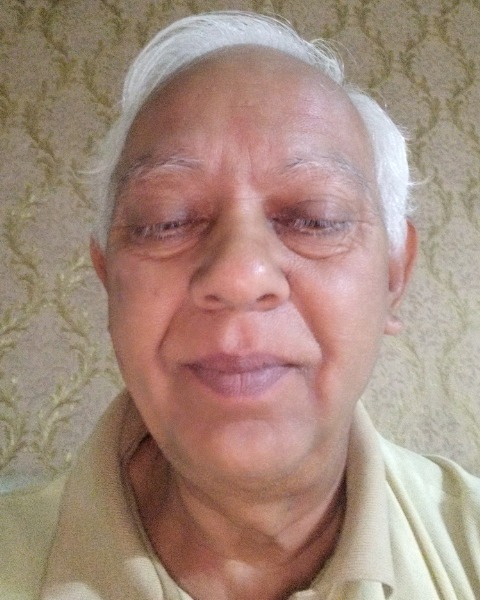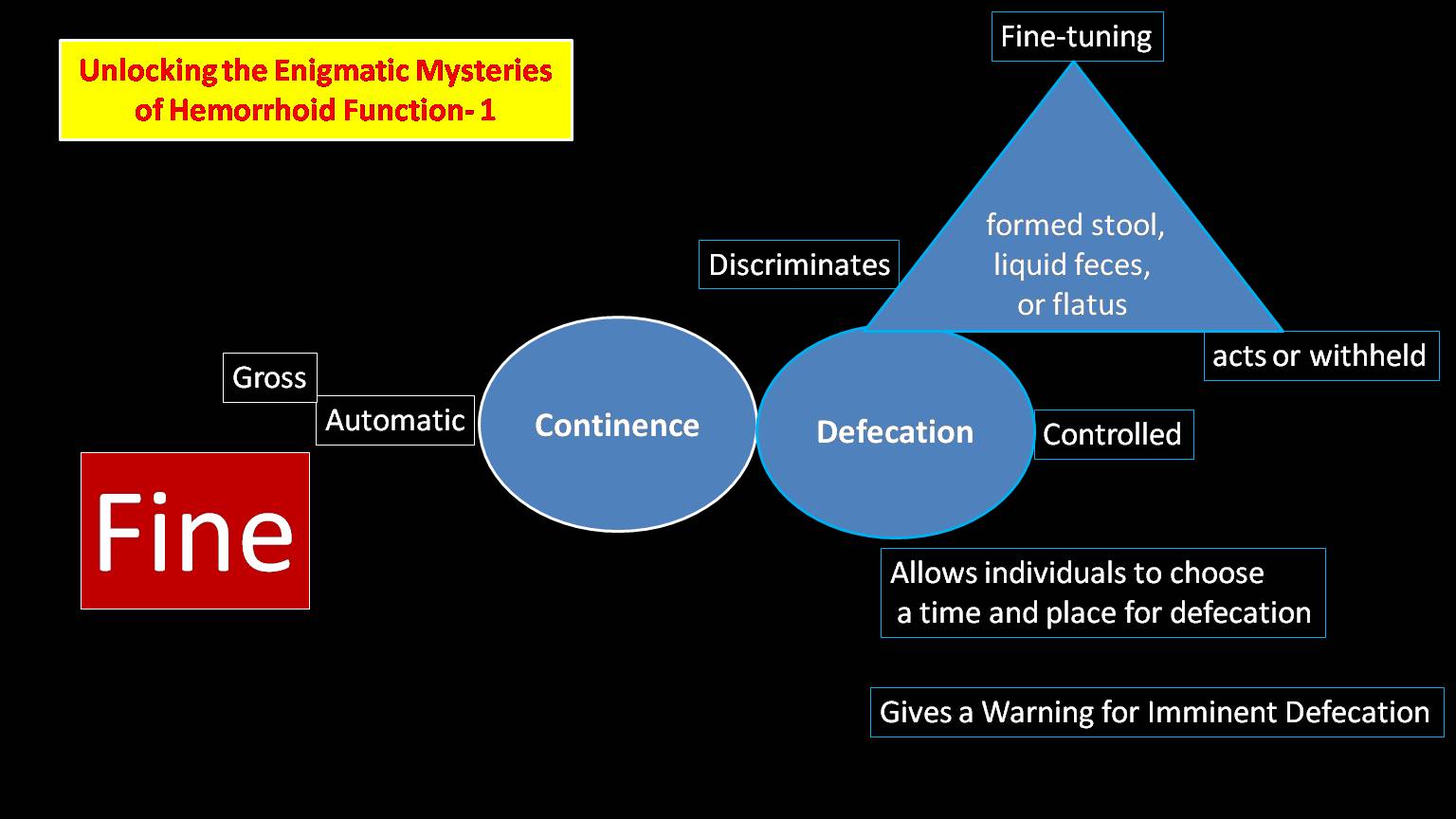Session: ePoster Monitor 8 - Late Breaking ePosters 3
eP817 - Transformative Strategies in Hemorrhoids Management: The Challenge of Shifting Perspectives to Preserving Anatomy, Physiology, and Function in Prospective Trial.
Monday, June 3, 2024
1:33 PM - 1:38 PM ET, USA
Location: Room 318-320

P. B. Patel, MS (he/him/his)
Owner
Shiv Shraddha Nursing Home
Ahmedabad 380004, Gujarat, IndiaDisclosure information not submitted.
ePoster Presenter(s)
Image or Table (Do Not add text here):
Purpose/Background: Hemorrhoids, anatomically referred to as anal cushions play a pivotal role in ensuring precise automatic continence and controlled defecation, both are fundamental prerequisites for socialization.
Excision Hemorrhoidectomy (EH), Laser Hemorrhoidoplasty (LHP), and Sclerotherapy use ablative techniques, resulting in either excision or submucosal fibrosis of hemorrhoids. Stapler Hemorrhoidopexy (SH) decreases rectal compliance, and Rubber band ligation (RBL) removes more mucosa than hemorrhoids.
These methods produce morphological insult in the form of loss of epithelium (sensation), expansive vascular and nonvascular parts of anal cushions, and anal lip. These changes in anatomy in the form of fibrosis (Diffuse, Sub mucous, or circular) result in scarring, deformity, and fixation. This leads to changes in physiology in the form of compromise of air and water tight seal, ease of defecation, anal lip, and rectal accommodation.
Fibrosis, sensory deprivation, decreased rectal compliance and fixity of mucosa lead to a change in function in the form of compromised automatic continence and controlled defecation and also recurrent fissures.
These anatomical and physiological defects are not obvious during function as the body compensates for them. Due to the limitations of available methods, quantifying it is impossible. These complex homeostatic balance control by neuronal (autonomic, peripheral somatic, entric, and central nervous system), hormonal (endocrine, paracrine), muscular(smooth, striated), and cognitive(behavioral, cognitive) is easily disturbed leads to incontinence.
Incontinence ranges from 7% to 15%, while up to 33% of hospitalized adults and 70% of adults in nursing homes. This devastating and nonfatal silent affliction has an excessive caregiver burden.
Except for EH, external hemorrhoids are not addressed. Secondary and circumferential hemorrhoids also remain unaddressed by all.Methods/Interventions: Prospective LONGITUDINAL CONSECUTIVE CASE SERIES enrolment of patients is planned for 5 years. Follow up at 15 days, 1,3,6 months, and 1 year. Then every 5 years until death or loss to follow up.
The primary outcome was recurrence as reported by patient pain, prolapse, blood loss, itching, incontinence, and soiling, The Secondary outcome was complications and patient satisfactionResults/Outcomes: I have presented two retrospective studies with very long follow-ups. The longest follow-up is more than 25 years. Excellent results encouraged me to start this Prospactive trial. The study started at the end of 2023.Conclusion/
Discussion: Tackling the challenge of crafting a method that delicately orchestrates targeted fibrosis and seamlessly reverses pathophysiological intricacies with finesse is an ambitious endeavor.
This sophisticated approach upholds the sanctity of anatomical structures by embodying Precise, Purposeful, Predictable, and Personalized fibrosis —a harmonious fusion encapsulated within the eloquent Principle of 4PF.
Revealing this groundbreaking methodology transcends mere innovation; it signals the potential for a paradigm shift in the standard of care. This unveiling offers an unmatched opportunity to enhance the well-being of innumerable individuals globally, reinforcing our dedication to advancing healthcare with a deep and transformative influence.
As we embark on this transformative journey, our pursuit extends beyond medical excellence; we aim for a profound and positive impact on the lives of those we are committed to serving.Major Problems in management of Internal Hemorrhoids Grade III and IV.jpg) Fine automatic continence and control defecation
Fine automatic continence and control defecation
Purpose/Background: Hemorrhoids, anatomically referred to as anal cushions play a pivotal role in ensuring precise automatic continence and controlled defecation, both are fundamental prerequisites for socialization.
Excision Hemorrhoidectomy (EH), Laser Hemorrhoidoplasty (LHP), and Sclerotherapy use ablative techniques, resulting in either excision or submucosal fibrosis of hemorrhoids. Stapler Hemorrhoidopexy (SH) decreases rectal compliance, and Rubber band ligation (RBL) removes more mucosa than hemorrhoids.
These methods produce morphological insult in the form of loss of epithelium (sensation), expansive vascular and nonvascular parts of anal cushions, and anal lip. These changes in anatomy in the form of fibrosis (Diffuse, Sub mucous, or circular) result in scarring, deformity, and fixation. This leads to changes in physiology in the form of compromise of air and water tight seal, ease of defecation, anal lip, and rectal accommodation.
Fibrosis, sensory deprivation, decreased rectal compliance and fixity of mucosa lead to a change in function in the form of compromised automatic continence and controlled defecation and also recurrent fissures.
These anatomical and physiological defects are not obvious during function as the body compensates for them. Due to the limitations of available methods, quantifying it is impossible. These complex homeostatic balance control by neuronal (autonomic, peripheral somatic, entric, and central nervous system), hormonal (endocrine, paracrine), muscular(smooth, striated), and cognitive(behavioral, cognitive) is easily disturbed leads to incontinence.
Incontinence ranges from 7% to 15%, while up to 33% of hospitalized adults and 70% of adults in nursing homes. This devastating and nonfatal silent affliction has an excessive caregiver burden.
Except for EH, external hemorrhoids are not addressed. Secondary and circumferential hemorrhoids also remain unaddressed by all.Methods/Interventions: Prospective LONGITUDINAL CONSECUTIVE CASE SERIES enrolment of patients is planned for 5 years. Follow up at 15 days, 1,3,6 months, and 1 year. Then every 5 years until death or loss to follow up.
The primary outcome was recurrence as reported by patient pain, prolapse, blood loss, itching, incontinence, and soiling, The Secondary outcome was complications and patient satisfactionResults/Outcomes: I have presented two retrospective studies with very long follow-ups. The longest follow-up is more than 25 years. Excellent results encouraged me to start this Prospactive trial. The study started at the end of 2023.Conclusion/
Discussion: Tackling the challenge of crafting a method that delicately orchestrates targeted fibrosis and seamlessly reverses pathophysiological intricacies with finesse is an ambitious endeavor.
This sophisticated approach upholds the sanctity of anatomical structures by embodying Precise, Purposeful, Predictable, and Personalized fibrosis —a harmonious fusion encapsulated within the eloquent Principle of 4PF.
Revealing this groundbreaking methodology transcends mere innovation; it signals the potential for a paradigm shift in the standard of care. This unveiling offers an unmatched opportunity to enhance the well-being of innumerable individuals globally, reinforcing our dedication to advancing healthcare with a deep and transformative influence.
As we embark on this transformative journey, our pursuit extends beyond medical excellence; we aim for a profound and positive impact on the lives of those we are committed to serving.Major Problems in management of Internal Hemorrhoids Grade III and IV
.jpg) Fine automatic continence and control defecation
Fine automatic continence and control defecation
